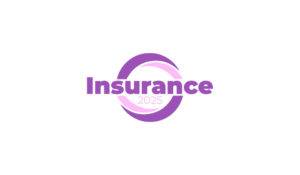8. Common exclusions and limitations in boat insurance policies
When it comes to boat insurance, it’s essential to familiarize yourself with the common exclusions and limitations that may be present in your policy. While boat insurance provides valuable coverage for various risks and potential damages, it’s crucial to understand the specific areas where coverage may be limited.
One common exclusion found in boat insurance policies is wear and tear. Just like any other vehicle, boats are subject to natural deterioration over time. Therefore, insurance providers may exclude coverage for damages resulting from normal wear and tear, such as corrosion, mechanical breakdown, or gradual deterioration of the boat’s structure.
Another limitation to be aware of is navigation boundaries. Some policies may have restrictions on where you can operate your boat and still be covered. For example, if your policy specifies that you can only navigate within a certain geographic area, venturing beyond those boundaries may result in limited or no coverage.
Furthermore, acts of nature can also pose limitations to your boat insurance coverage. While policies typically cover damages caused by storms or lightning strikes, there may be exclusions for certain natural disasters such as earthquakes, floods, or hurricanes. It’s crucial to thoroughly review your policy to understand the specific coverage in these situations.
Additionally, many boat insurance policies have exclusions for intentional acts or illegal activities. If you engage in activities that are against the law or intentionally cause damage to your boat, your insurance company may deny your claim.
Lastly, it’s important to note that personal property stored on your boat may have limited coverage under your boat insurance policy. Valuable items like fishing equipment, electronics, or personal belongings may require additional coverage or a separate policy to ensure adequate protection.
Understanding these common exclusions and limitations in boat insurance policies will help you make informed decisions when choosing coverage and avoid potential issues when filing a claim. It’s always recommended to thoroughly read and discuss your policy with your insurance provider to ensure you have the right coverage for your specific boating needs.
9. Steps to take when filing a boat insurance claim .
Filing a boat insurance claim can be a daunting process, but by following these steps, you can navigate the waters smoothly and ensure a successful claim:
Step 1: Report the incident immediately
As soon as an accident or damage occurs, it is crucial to report the incident to your insurance provider promptly.
Step 2: Document the damage
Take photos or videos of the damage sustained by your boat.
Step 3: Gather necessary information
Collect all the relevant information related to the incident, including the date, time, location, weather conditions, and any other parties involved. This information will help in the claims process and ensure accurate documentation.
Step 4: Contact witnesses
Their statements can be valuable in validating your claim and providing additional evidence.
Step 5: Notify authorities if necessary
Depending on the severity of the incident, it may be necessary to involve the coast guard or local authorities. Follow the proper protocol and ensure that you have the necessary reports and documentation from these authorities.
Step 6: Consult your insurance policy
Familiarize yourself with any deductibles, exclusions, or limitations that may apply to your claim.
Step 7: Contact your insurance agent
Reach out to your insurance agent or company to initiate the claims process.
Step 8: Provide accurate information
When completing the claim forms, ensure that all the information provided is accurate and comprehensive.
Step 9: Follow up on your claim
Keeping open communication will help expedite the resolution of your claim.
By following these steps, you can navigate the boat insurance claims process with confidence, ensuring that your boat is protected and any damages are appropriately covered.
10. Additional considerations for boat owners: safety measures and discounts
As a boat owner, there are additional considerations beyond simply purchasing insurance coverage. Ensuring the safety of your vessel and those on board is paramount, and it can also have a positive impact on your insurance premiums. Many insurance providers offer discounts for implementing certain safety measures.
One important safety measure is to have proper safety equipment on board. This includes life jackets for every passenger, fire extinguishers, distress signals, and navigation lights. By adhering to safety regulations and having the necessary equipment in place, you not only protect yourself and your passengers but also demonstrate your commitment to safety to your insurance provider.
Another safety consideration is completing a boating safety course. These courses cover essential topics such as navigation rules, emergency procedures, and safe boating practices. Successfully completing a recognized boating safety course can not only enhance your knowledge and confidence on the water but also qualify you for insurance discounts. Insurance providers often view boaters who have taken these courses as being less of a risk, leading to potential premium reductions.
It’s also essential to properly maintain your boat. Regular inspections, maintenance checks, and servicing can help prevent accidents and breakdowns. A well-maintained boat is seen as less of a risk by insurance providers, potentially resulting in lower insurance premiums.
Remember to discuss these safety measures and any potential discounts with your insurance provider. They can provide valuable information on what safety measures are recommended and what discounts are available. By prioritizing safety and taking advantage of available discounts, you can navigate the waters of boat insurance confidently and enjoy peace of mind while out on the water.
We hope you found our blog post on navigating boat insurance informative and helpful. As boating enthusiasts ourselves, we know how important it is to have the right coverage for your vessel. By understanding the different types of boat insurance, the factors that affect premiums, and the common pitfalls to avoid, you’ll be well-equipped to make informed decisions when it comes to insuring your boat. So, set sail with confidence, knowing that you have the right protection in place for all your boating adventures. Smooth seas and fair winds to you!

